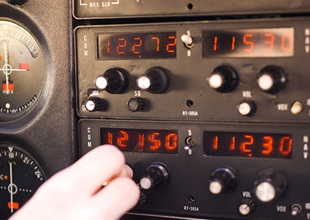
It doesn’t take long for a student pilot to become accustomed to the pleasant routine of preparing the trainer for flight. Elements that recently seemed mysterious now feel comfortable and familiar. When something looks out of place, you spot it easily.
Today as you prepare to head to the practice area, all seems status quo until you turn on the radios. One is tuned as usual to your nontowered airport’s common traffic advisory frequency. But the other, usually set to the nearby approach control facility frequency, is on 121.5 MHz.
Did the aircraft have an emergency?
Not necessarily. Perhaps the pilot was checking to see if the aircraft’s emergency locator transmitter, or another nearby, had activated. Also, the Aeronautical Information Manual notes that "pilots are encouraged" to monitor the frequency during flight to help identify possible ELT transmissions. Do you recall the four items that should be reported to air traffic control if you hear an ELT’s shrill tone on the radio? You should report your position at the time the signal was first heard, position at the time the signal was last heard, position at maximum signal strength, and flight altitudes and frequency on which the emergency signal was heard (121.5 MHz, or 243.0 MHz for military aircraft).
Monitoring 121.5 MHz is one of many actions the FAA encourages pilots to take—for flight safety and to increase their understanding of the ATC system—but does not require.
What else does the FAA encourage?
It is encouraged, for example, to turn on landing lights "after takeoff clearance has been received or when beginning takeoff roll," as well as "when operating below 10,000 feet, day or night, especially when operating within 10 miles of any airport, or in conditions of reduced visibility and in areas where flocks of birds may be expected, i.e., coastal areas, lake areas, around refuse dumps, etc."
At a towered airport, when should an aircraft that has taxied to the runway change from ground control to the tower? Unless otherwise advised, change from ground to local control "when ready to request takeoff clearance." But also note that "pilots are encouraged to monitor the local tower frequency as soon as practical consistent with other ATC requirements."
The FAA also encourages pilots to visit ATC facilities to become more familiar with how the system operates. (See AIM 4-1-6.)



